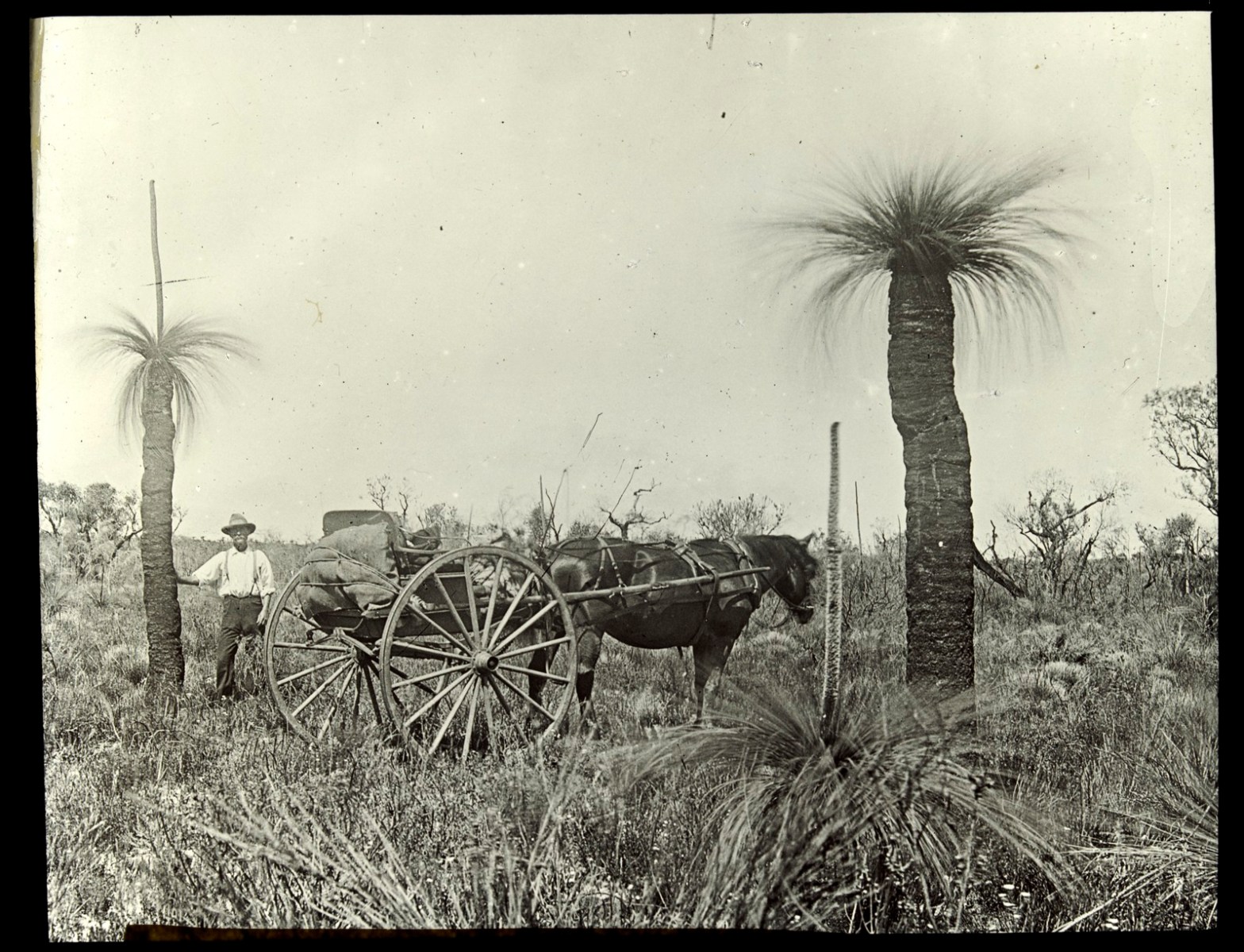The austral grasstree (Xanthorrhoea australis) is commonly found growing in heathlands on poor sandy soils along the east coastal strip from NSW to SA, as well as Tasmania.
They are highly susceptible to the soil-borne disease Phytophthora cinnamomi.
In 1882, the Victorian Inspector of Forests William Ferguson made a field survey of the Heytesbury Forest in the south-west of the state. It was estimated there were 60,000 acres of grasstree plains thought to be of little commercial or agricultural use.
The Aboriginals had long made use of the grasstree resin and some early settlers were quick to realise its potential.
On the goldfields, hollow stems were used for makeshift waterpipe.
The resin was very versatile and could be used for making industrial alcohol and cheap lacquer for furniture and floors. It was used as a coating on brass instruments and for preserving cans of meat; as stove polish; as a sealing wax, caulking for boats, church incense, sizing paper, perfumery, soap and even making gramophone records.
On treatment with nitric acid, the resin also yields a large quantity of picric acid. There was community outrage when it was learned that in the three years prior to World War I, Germany had imported approximately 1500 tonnes of grass-tree resin suspected of being used to manufacture explosives.
There were a couple of unsuccessful attempts to commercialise the grasstrees at Heytesbury.
But in about 1908, the Victorian Department of Agriculture cleared 1000 acres to establish an experimental farm and as a result some land was made available for selection. The first scheme was deemed a failure, but it was followed by a much larger land clearing program in the 1950s using modern heavy machinery.
Meanwhile, the Forests Department had long opposed applications land clearing and commercial grass tree harvesting in an attempt to protect commercial quantities of timber at Heytesbury.

Thanks, Peter – some new details there for me – as ever, really interesting.
R
>
LikeLike